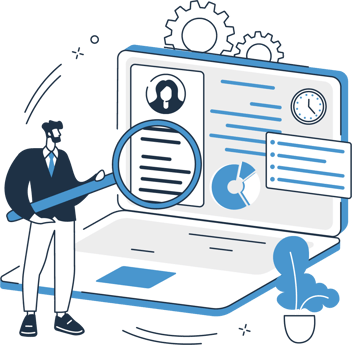
Successfully creating a data-driven culture in your school requires the digital, data and human infrastructure to support it.
But how do you tell if your school is set up in a way that optimises effective use of data for your teachers and staff? Let’s examine what healthy digital, data and human infrastructure looks like, and what to consider when evaluating your own.
Digital Infrastructure
Every school has a multitude of systems in place that source and store educational data, most of which is housed in Student Management and Learning Management systems which contain a variety of academic, assessment and welfare related data.
Examining your school’s software systems – particularly how they hold and share information – is essential to ensuring your school is set up in a way that optimises effective use of data.
Where is your data?
Consider all the systems in your school that hold Educational Data – these systems, across all departments, must work together and share data to operate efficiently.
With so many moving parts it’s easy for information to end up stored across multiple locations, which causes double handling by staff, or risks data becoming outdated. A school with a well-organised software infrastructure will have one central point of truth, from which all their other systems can securely pull data.
Is your data available?
Your school’s data should be where you need it, when you need it. Making data as easily accessible as possible is key to facilitating data analysis, as barriers like time or location can prevent staff from accessing the data they need.
Ensuring that key systems are accessible around the clock is a key trait in data-driven schools.
Are your systems secure?
Having strong data security seems like a no-brainer for schools, however it’s important to think about the ongoing security and trustworthiness of your data. Consider who has access to what information and try to keep any sensitive or personal information as restricted as possible.
Whether it’s data being rewritten, or a well-meaning change to the wrong field, having restrictions on which staff can access and modify your records can save you from data integrity problems down the track.
Data Infrastructure
Data infrastructure refers to the vast amounts of information that your school collects, shares and stores.
Think of your school’s database as your workspace – keeping it clean and well-organised increases productivity and makes it easier to work more efficiently.
Is your database complete?
Over time databases can accumulate inconsistent, duplicate, or incorrectly formatted data, so ensuring your database is kept up to date and well maintained will set you up for success.
Having a proper ‘Decluttering Procedure’ and scheduling regular database cleans is the best way to stop things from getting out of hand.
Ensuring the data is easy to read and understand for everyone involved will also make it easier for staff to quickly draw insights.
Is your data relevant?
Each school has different priorities, so whatever your focus is, you must ensure that you are collecting data relevant to your specific needs.
Whether your school has a strong focus on student wellbeing, or a prominent extracurricular program, consider how success is measured in these areas, and what related metrics you may want to keep track of.
However, in addition to any specific focus areas, don't neglect to collect holistic data on your school's overall activities. From individual student profiles to school-wide performance insights, this more general data will likely be valuable for future analysis needs, even if it's not a priority right now.
Human Infrastructure
Human infrastructure is possibly the most important aspect of ensuring your school can support effective use of data - after all, without people to interpret and facilitate it, data is essentially meaningless.
Data literacy
Leaders and teachers must have the skills to use data effectively. Evaluate your school to get a realistic understanding of your staff’s data literacy, and provide assistance where required with training and professional development opportunities.
It’s important that any hesitant staff understand that data analysis is only there to support their decision-making, not to replace their personal observations and intuition.
Ongoing support
Data should be used to improve learning and inform pedagogical change, but not as a once-off event. If you find that engagement with data analytics is going down, investigate what might be preventing staff from taking advantage of the tools they have available.
Ongoing training and support for teachers will ensure they are always prepared with the skills needed for informed data practice.
Hopefully, these tips will help you to examine your school’s digital, data and human infrastructure, and make it easier for your school to take advantage of your vast pool of student, administrative and financial information to identify key trends.
![]()
Visualise your software infrastructure!
Want to see how your systems connect and share data? This interactive tool developed by The Alpha School System is a great way to visually map out your school's systems.





